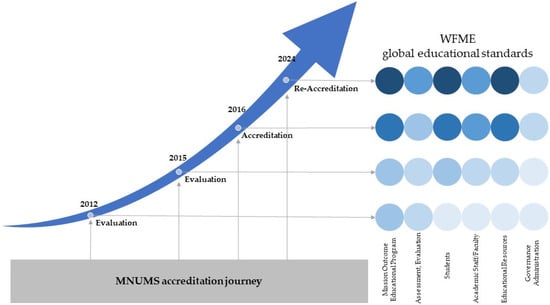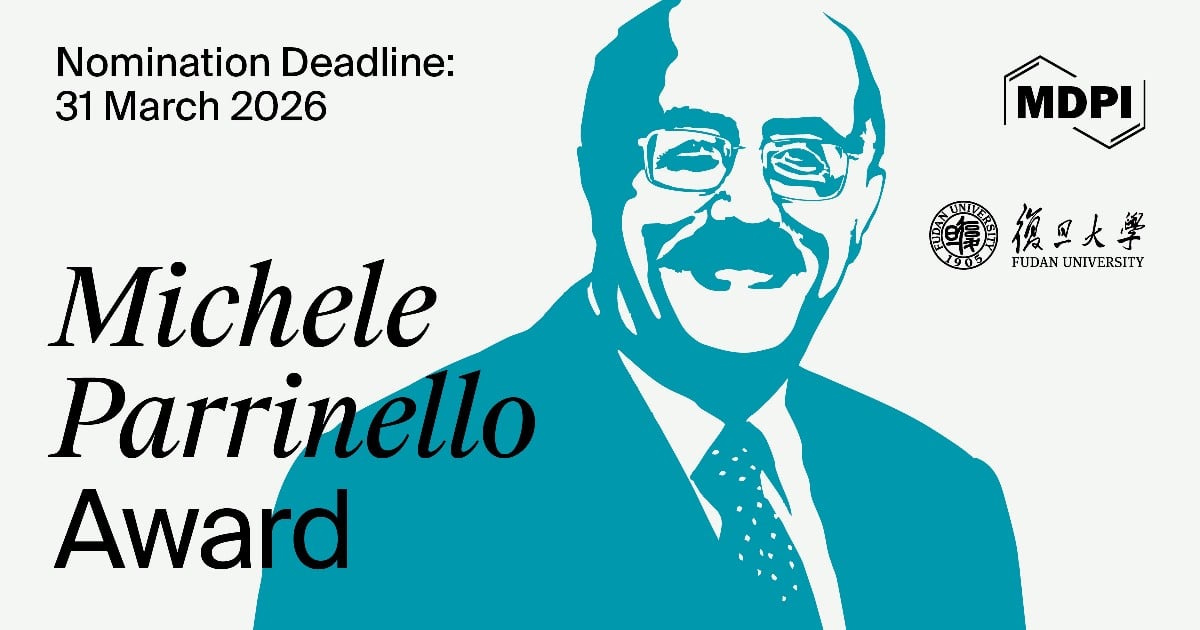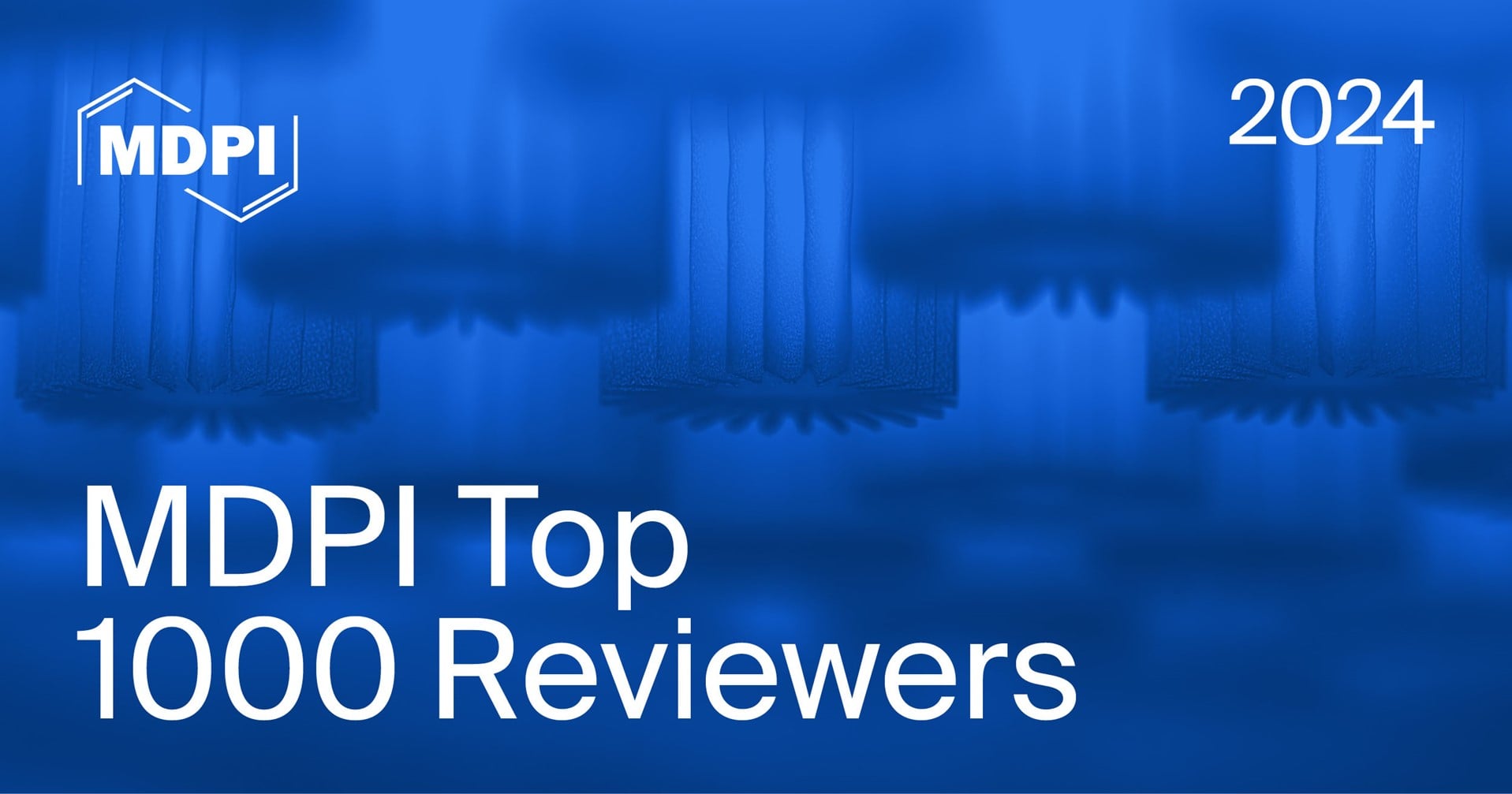Journal Description
International Medical Education
International Medical Education
(IME) is an international, peer-reviewed, open access journal on international medical education, published quarterly online. It is the official journal of the Academic Society for International Medical Education.
- Open Access— free for readers, with article processing charges (APC) paid by authors or their institutions.
- High Visibility: indexed within ESCI (Web of Science), Scopus and other databases.
- Rapid Publication: manuscripts are peer-reviewed and a first decision is provided to authors approximately 21.8 days after submission; acceptance to publication is undertaken in 3.4 days (median values for papers published in this journal in the first half of 2025).
- Recognition of Reviewers: APC discount vouchers, optional signed peer review, and reviewer names published annually in the journal.
Latest Articles
Transforming Medical Education Through International Accreditation: The Case of the Mongolian National University of Medical Sciences (2010–2024)
Int. Med. Educ. 2026, 5(1), 2; https://doi.org/10.3390/ime5010002 - 19 Dec 2025
Abstract
►
Show Figures
This paper examines the 14-year journey of the Mongolian National University of Medical Sciences (MNUMS) in achieving and sustaining international accreditation for its undergraduate medical program. Beginning in 2010, MNUMS undertook a series of institutional reforms that culminated in full accreditation in 2016
[...] Read more.
This paper examines the 14-year journey of the Mongolian National University of Medical Sciences (MNUMS) in achieving and sustaining international accreditation for its undergraduate medical program. Beginning in 2010, MNUMS undertook a series of institutional reforms that culminated in full accreditation in 2016 and re-accreditation in 2024 by an international agency recognized by the European Network for Quality Assurance in Higher Education (ENQA). Drawing on institutional self-assessment reports, evaluator feedback, and stakeholder consultations, this case study explores how the accreditation process functioned as a catalyst for educational reform and quality enhancement. The findings reveal major transformations in curriculum design, assessment systems, and institutional governance. MNUMS adopted the European Credit Transfer and Accumulation System (ECTS), introduced outcome-based education and Entrustable Professional Activities (EPAs), expanded its Clinical Skills Center, and implemented a compulsory undergraduate research project. Additionally, the creation of an integrated Bachelor–Master pathway and strengthened international partnerships further advanced the university’s alignment with global medical education standards. This case illustrates how international accreditation can drive systemic improvement in medical education within developing-country contexts. The MNUMS experience highlights the value of sustained institutional commitment, responsiveness to external evaluation, and the strategic use of accreditation as a framework for continuous innovation and global integration.
Full article
Open AccessArticle
Utility of Multiple Mini-Interviews in Pathology Residency Interviews (GME)
by
Eliza Sherman-Daniels, Ljiljana Vasovic and Rajan Dewar
Int. Med. Educ. 2026, 5(1), 1; https://doi.org/10.3390/ime5010001 - 19 Dec 2025
Abstract
►▼
Show Figures
The Multiple Mini-Interview (MMI) model is a commonly used interviewing technique at the undergraduate medical education (UME) level for medical school admissions. In this interview, candidates discuss a scenario with their interviewer. While many undergraduate medical institutions have adopted the MMI form of
[...] Read more.
The Multiple Mini-Interview (MMI) model is a commonly used interviewing technique at the undergraduate medical education (UME) level for medical school admissions. In this interview, candidates discuss a scenario with their interviewer. While many undergraduate medical institutions have adopted the MMI form of interviewing, it is rarely used in graduate medical education (GME/residency) interviews; no other pathology programs currently employ MMI. We share our experience with the use of MMI for Pathology GME interviews in 2023–2024. 50 interviews for the pathology residency program at Westchester Medical Center (WMC) were performed for the 2023–2024 season and included in this study (100%), with two scenarios on different interview dates. Candidates were scored from 1–5 based on five criteria. Including data from both scenarios, candidates performed well, with average scores above 4 for all categories. We found that most candidates received high scores in the MMI portion; however, the bottom ranked candidates performed very poorly in the MMIs. Traditional faculty scores varied significantly from MMI scores (p < 0.01). MMI scores were high overall and had less discriminatory value during this initial reiteration. Broader MMI implementation may provide more insights for its utilization in pathology resident selection.
Full article
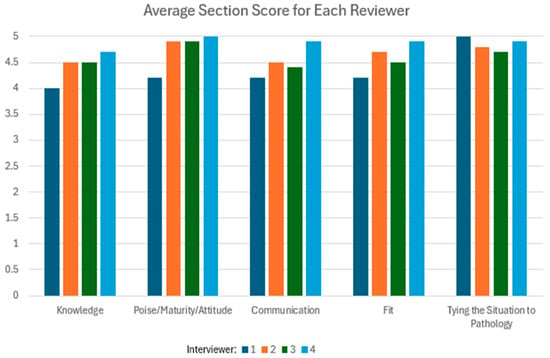
Figure 1
Open AccessArticle
Teaming for Patient Safety: Interprofessional Root Cause Analysis and Action Plan
by
Holly Olson, Melodee Deutsch, Chad Kawakami, Alison Miyasaki, Sheri Tokumaru, Joanne R. Loos, Susan Steinemann, Lee Buenconsejo-Lum, Kamal Masaki and Lorrie C. K. Wong
Int. Med. Educ. 2025, 4(4), 55; https://doi.org/10.3390/ime4040055 - 12 Dec 2025
Abstract
Background: Patient safety through root cause analyses and action planning (RCA2) is often taught in healthcare system-specific formats, in ways that are not applicable to interprofessional teams. The purpose of this article is to describe and evaluate an interprofessional RCA2 simulation conducted via
[...] Read more.
Background: Patient safety through root cause analyses and action planning (RCA2) is often taught in healthcare system-specific formats, in ways that are not applicable to interprofessional teams. The purpose of this article is to describe and evaluate an interprofessional RCA2 simulation conducted via videoconferencing, where attendees used cause mapping to identify root causes. Methods: Educators from medicine, nursing, and pharmacy schools developed the curriculum. Sessions included residents from graduate medical education programs, senior nursing students, and pharmacy residents. Facilitators provided brief didactics, and the simulation reviewed a safety event, root cause analysis, development of action plans, and a formal debrief session. Google Suite tools were used to create a cause map and action plan. Participants completed the Interprofessional Collaborative Competencies Attainment Survey (ICCAS), facilitators conducted after-action reviews, and survey responses were used for quality improvement. Results: Most participants found this simulation helpful. There were significant improvements in self-perception of skills in the six ICCAS domains. Participants also noted that learning RCA would be helpful in their future practice. Conclusions: This patient safety simulation in an interprofessional team environment helped participants develop teamwork and an understanding of the RCA2 process. Participants learned to ask clarifying questions and voice concerns, which is essential when identifying root causes. This process serves as a guide for teaching these skills. Future iterations can implement this simulation-based RCA and adapt it for other, diverse populations.
Full article
(This article belongs to the Special Issue New Advancements in Medical Education)
►▼
Show Figures

Figure 1
Open AccessArticle
A Structured Approach to History and Physical Examination in Oncology for Medical Learners
by
Leenah Abojaib, Aashvi Patel and Beatrice T. B. Preti
Int. Med. Educ. 2025, 4(4), 54; https://doi.org/10.3390/ime4040054 - 11 Dec 2025
Abstract
►▼
Show Figures
In oncology, traditional H&P templates centered on a single chief complaint often fail to address the longitudinal care needs and emotional complexities of cancer patients, leaving learners unprepared for sensitive conversations such as breaking bad news or discussing treatment goals. To address this,
[...] Read more.
In oncology, traditional H&P templates centered on a single chief complaint often fail to address the longitudinal care needs and emotional complexities of cancer patients, leaving learners unprepared for sensitive conversations such as breaking bad news or discussing treatment goals. To address this, we conducted a literature review of specialty-focused H&P tools in child psychiatry and gynecology and, drawing on our experiences as two first-year medical students in an outpatient oncology clinic, developed an oncology H&P template to guide novice clinicians. The guide incorporates structured prompts for rapport-building; detailed oncologic and family cancer history; functional independence assessments; treatment goals; emotional wellbeing; support networks; and responding to emotion. After initial pilot testing by the two developers under supervisor guidance, the template was distributed to five then ten additional students and disseminated via the ASCO online forum and Twitter. Feedback from ten oncologists and oncology trainees highlighted the template’s value in gathering review of systems, past treatment details, functional status, and cancer history. Our findings suggest that this oncology-tailored tool enhances interview flow, promotes comprehensive data collection, and supports empathetic patient engagement. Integration into routine oncology training is planned, with future adaptations for specific oncological subspecialties and potential use in other medical specialties.
Full article
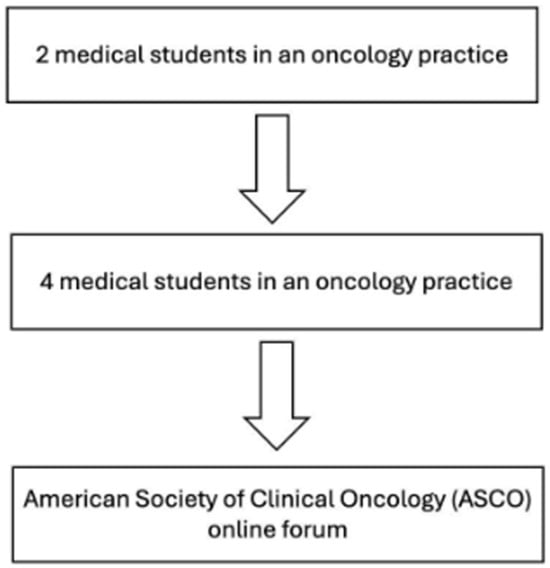
Figure 1
Open AccessCommentary
Interviews in the Recruitment of Student Midwives and Nurses: Safeguard or Artefact of Unconscious Bias? A Brief Commentary
by
Ray Samuriwo
Int. Med. Educ. 2025, 4(4), 53; https://doi.org/10.3390/ime4040053 - 3 Dec 2025
Abstract
Midwives and nurses are integral to the quality and safety of patient care. However, there is a limited amount of critical discussion and debate about the use of interviews to recruit people to study for these professions. There are some reports of people
[...] Read more.
Midwives and nurses are integral to the quality and safety of patient care. However, there is a limited amount of critical discussion and debate about the use of interviews to recruit people to study for these professions. There are some reports of people who are marginalised, minoritised, or racialised, being denied the opportunity to study for a degree in these professions, despite meeting the requisite entry requirements. Therefore, this commentary analyses the contemporary narrative and discussion relating to the role of interviews in recruiting student midwives and nurses. This critical analysis uses the UK as a case study and promulgates an alternative approach that could result in a more diverse workforce and enhance patient safety. It is hoped that the critical analytical approach taken in this paper will inspire those involved in recruitment to midwifery and nursing to consider the efficacy, utility, and equity of recruitment interviews and their impact on who is or is not afforded the opportunity to pursue a career in these professions.
Full article
(This article belongs to the Special Issue Health Professions Education Advancements and Innovations—International Perspectives)
Open AccessProject Report
The Wellness Home: A Comprehensive Model for Graduate Medical Education Trainees’ Wellbeing
by
Veena Prasad, Adriana Dyurich, Woodson Scott Jones and Jon A. Courand
Int. Med. Educ. 2025, 4(4), 52; https://doi.org/10.3390/ime4040052 - 1 Dec 2025
Abstract
►▼
Show Figures
Graduate Medical Education trainees’ wellness has become an important topic in academic medicine. The Accreditation Council for Graduate Medical Education (ACGME) requires oversight, education, and resources, understanding that medical training happens within a complex environment. Patients, personal and psychosocial issues, overlays, administrative demands,
[...] Read more.
Graduate Medical Education trainees’ wellness has become an important topic in academic medicine. The Accreditation Council for Graduate Medical Education (ACGME) requires oversight, education, and resources, understanding that medical training happens within a complex environment. Patients, personal and psychosocial issues, overlays, administrative demands, and intense oversight at various levels add additional elements of complexity and stress. The demographics of medicine are changing, with a greater proportion of women, minorities, and international medical graduates entering training with different needs and greater expectations. GME trainees constitute a population with unique needs that demand an adaptable and broad approach toward wellbeing and training success. The University of Texas Health San Antonio (UTHSA) created the Wellness Home, a comprehensive and adaptable model inspired by those used in primary care, where support is offered to trainees and training programs. It addresses issues beyond mental health management by including interventions such as coaching, access to medical services, or financial literacy. We present here a detailed description of the program and a rationale for developing this holistic approach in other institutions. Case studies are used to illustrate the complex needs of trainees and the innovative approaches used in their support. Usage data is presented as additional evidence that this model is increasingly and successfully being used.
Full article

Figure 1
Open AccessArticle
Improving Accuracy in Cardiopulmonary Resuscitation Training: Results on Undergraduate Nursing School Students’ with OMNI2 Simulator
by
Fani Alevrogianni, Anna Korompeli, Christos Triantafyllou, Theodoros Katsoulas, Panagiotis Koulouvaris and Pavlos Myrianthefs
Int. Med. Educ. 2025, 4(4), 51; https://doi.org/10.3390/ime4040051 - 25 Nov 2025
Abstract
Cardiopulmonary resuscitation (CPR) is a vital skill for healthcare professionals, crucial in life-saving situations. More than 80% of cardiac arrest cases occur out of hospital. As the demand for competent CPR practitioners grows, the effectiveness of training methods becomes increasingly important, especially for
[...] Read more.
Cardiopulmonary resuscitation (CPR) is a vital skill for healthcare professionals, crucial in life-saving situations. More than 80% of cardiac arrest cases occur out of hospital. As the demand for competent CPR practitioners grows, the effectiveness of training methods becomes increasingly important, especially for undergraduate students preparing to enter the healthcare field. The primary objective of our study is to investigate the effectiveness of simulation-based teaching methods and by integrating innovative technologies, such as the OMNI2 simulator, to enhance practitioners’ performance and to improve the precision and objectivity of CPR instruction. A cohort of 144 undergraduate students from the Nursing School Department of the National Kapodistrian University of Athens participated in an 8 h Basic Life Support Seminar. It consisted of a 5 h theoretical instruction followed by 3 h of practical training using the OMNI2 simulator. Each student was tasked to identify cardiac arrest and to perform two cycles of CPR according to the 2021 guidelines. Metrics, including total session time, cycles performed, compression-to-ventilation ratio, compression depth, compressions and ventilations per minute, full recoil, peak inspiratory pressure, and ventilation duration, were measured and compared against the simulator’s preset targets. Statistically significant differences (p < 0.05) were observed for all outcomes. In conclusion, while simulation-based teaching has conventionally been proven effective for CPR proficiency, real-time data collected in this study reveal a disparity between anticipated and actual performance. Our research underscores the necessity of refining instructional methods to enhance skill acquisition, potentially leading to improved patient outcomes in the future.
Full article
(This article belongs to the Special Issue New Advancements in Medical Education)
►▼
Show Figures
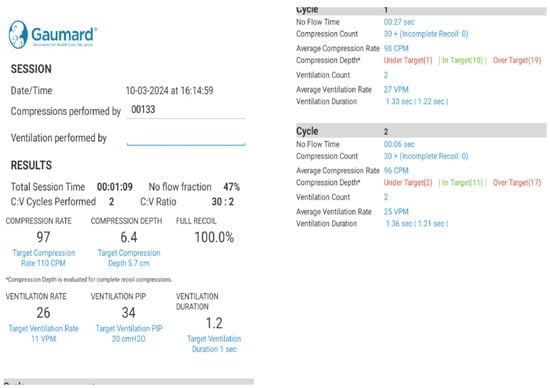
Figure A1
Open AccessReview
The Growing Importance of Soft Skills in Medical Education in the AI Era: Balancing Humanistic Care and Artificial Intelligence
by
Effie Simou
Int. Med. Educ. 2025, 4(4), 50; https://doi.org/10.3390/ime4040050 - 21 Nov 2025
Abstract
The rapid integration of artificial intelligence (AI) into healthcare has reshaped medical education and clinical practice. While technological innovation is vital, soft skills are essential for preserving trust, ethical accountability, and humanistic care. This study explores the evolving role of soft skills in
[...] Read more.
The rapid integration of artificial intelligence (AI) into healthcare has reshaped medical education and clinical practice. While technological innovation is vital, soft skills are essential for preserving trust, ethical accountability, and humanistic care. This study explores the evolving role of soft skills in medical education in the AI era by examining definitional challenges, pedagogical strategies, and the integration of AI-related literacy. A narrative review methodology synthesized evidence across seven thematic domains, focusing on curricular integration, pedagogical strategies, and assessment approaches in medical education within AI-enabled learning environments. The findings demonstrated that soft skills improve patient adherence, satisfaction, safety, and trust; strengthen physicians’ professional identity, collaboration, and resilience; and enhance system-level outcomes, such as resilience, safety, and public trust. Experiential, reflective, and competency-based pedagogies remain the most effective instructional strategies, while AI-supported tools, including virtual patients, adaptive simulations, large language models (LLMs), and Retrieval-Augmented Generation systems (RAG), offer complementary benefits by enhancing doctor-patient communication, providing real-time personalized feedback, and strengthening clinical reasoning. Soft skills function as an interconnected and synergistic ecosystem that is reinforced by cognitive, affective, humanistic, and ethical mechanisms. Integrating these competencies with AI literacy promotes theoretical clarity, supports programmatic assessment, and fosters responsible innovation, ensuring that technological advancement enhances rather than diminishes the humanistic foundations of medicine.
Full article
(This article belongs to the Special Issue Health Professions Education Advancements and Innovations—International Perspectives)
►▼
Show Figures

Figure 1
Open AccessArticle
Quality Assessment of Pathology Board-Exam-Style MCQs Produced by ChatGPT3.5: A Comparative Study
by
Arianna B. Morton, Zunaira Naeem, Allison Goldberg, Alexis Peedin and Joanna Chan
Int. Med. Educ. 2025, 4(4), 49; https://doi.org/10.3390/ime4040049 - 18 Nov 2025
Abstract
Residents preparing for pathology board exams frequently use multiple-choice questions (MCQs) from question banks (QBs) like PathDojo and PathPrimer, which can be costly. ChatGPT, a free tool, has been used to generate MCQs for other tests like the SAT. This study compared the
[...] Read more.
Residents preparing for pathology board exams frequently use multiple-choice questions (MCQs) from question banks (QBs) like PathDojo and PathPrimer, which can be costly. ChatGPT, a free tool, has been used to generate MCQs for other tests like the SAT. This study compared the quality of pathology MCQs created by ChatGPT versus commercially available study questions for the American Board of Pathology’s (ABPath) certifying exams. A rubric adapted from the National Board of Medical Examiners’ (NBME) question writing guide was validated by two pathologists using commercially available pathology board exam questions. This rubric was then used to evaluate MCQs from commercially available pathology board study books as well as MCQs created by ChatGPT. The results compared the percentage of criteria met between ChatGPT and control MCQs using chi-square analysis with significance set at <0.05. While ChatGPT MCQs were less likely to be accurate compared to commercially available MCQs in four criteria (the best answer choice (82.5% vs. 100%), reflection of current practice (84.6% vs. 100%), error-free explanation (87.9% vs. 100%), and explanation reflecting current practice (87.9% vs. 100%)), the complexity of the ChatGPT-generated questions was higher (78.5% vs. 47.2%). At this time, ChatGPT-generated MCQs should not be used in the same way as commercially available study guides, however there is potential for learned language models (LLM)s to create quality study materials and exam questions with careful monitoring
Full article
(This article belongs to the Special Issue New Advancements in Medical Education)
Open AccessArticle
The Use of Podcasts as a Learning Activity During a Year 5 Competency-Based Blended Learning Curriculum at Saarland University
by
Nadine Wolf, Philip Vogt, Sinan Durant, Sara Volz-Willems, Johannes Jäger and Fabian Dupont
Int. Med. Educ. 2025, 4(4), 48; https://doi.org/10.3390/ime4040048 - 14 Nov 2025
Abstract
(1) Podcasts are increasingly used in undergraduate medical education. They differ from traditional learning activities and may influence exam performance. Podcasts also offer insights into learning behaviour and perceptions of family medicine (FM). Despite their frequent use in medical education, it remains unclear
[...] Read more.
(1) Podcasts are increasingly used in undergraduate medical education. They differ from traditional learning activities and may influence exam performance. Podcasts also offer insights into learning behaviour and perceptions of family medicine (FM). Despite their frequent use in medical education, it remains unclear how they can best be integrated into competency-based curricula and motivate students to study for FM. This study examines the impact of a medical podcast on learning behaviour and academic performance at Saarland University (UdS). (2) This exploratory mixed-methods study analyzed podcast-related learning behaviour and exam relevance among year-five medical students at UdS in the winter semester 2024/25. Demographic, quantitative, and qualitative data were collected via an online questionnaire (Google Forms®) in January 2025. Data were descriptively and analytically evaluated and linked to exam results. Qualitative data were analyzed using Kuckartz’s content analysis. (3) Of 123 eligible students, 92 participated. Most listened to episodes in full. Podcasts were seen as low-threshold means to access study content, but they were often not perceived as a separate learning activity. Listening to podcasts did not directly influence exam performance but helped connecting theory with clinical relevance and increased motivation for FM. (4) Podcasts are popular for exploring clinical practice and complex topics. Their didactic value lies in contextual learning and career orientation, rather than improving exam performance.
Full article
(This article belongs to the Special Issue Health Professions Education Advancements and Innovations—International Perspectives)
Open AccessArticle
The Jigsaw Technique in Learning Anatomy: A Qualitative Study of Medical Students’ Perceptions
by
Punithalingam Youhasan and Hayathu Mohamed Fathima Jameelathun Nazeefa
Int. Med. Educ. 2025, 4(4), 47; https://doi.org/10.3390/ime4040047 - 10 Nov 2025
Abstract
►▼
Show Figures
Contemporary medical education is shifting from traditional, teacher-centred anatomy instruction toward interactive, student-centred, and clinically integrated approaches. The Jigsaw Method aligns with this shift by fostering collective competence, which is vital for effective clinical practice. This study aimed to introduce the jigsaw model
[...] Read more.
Contemporary medical education is shifting from traditional, teacher-centred anatomy instruction toward interactive, student-centred, and clinically integrated approaches. The Jigsaw Method aligns with this shift by fostering collective competence, which is vital for effective clinical practice. This study aimed to introduce the jigsaw model to medical students and explore its perceived effectiveness in teaching anatomy. A phenomenological qualitative design was employed to explore the experiences of second-year medical students (n = 120) at the Faculty of Health-Care Sciences, Eastern University, Sri Lanka. Open-ended questions were used to elicit students’ reflections on the effectiveness of jigsaw learning. Thematic analysis was conducted using NVivo software (ver.14). Students reported generally favourable perceptions of the jigsaw method. Four major themes emerged: two described the positive impact of the approach—enhanced understanding through peer learning and improved interpersonal and communication skills; the remaining themes addressed challenges in implementation and suggestions for refinement. Participants appreciated the structured collaboration and positive interdependence fostered by the method. Moreover, students viewed the jigsaw technique as well-aligned with student-centred learning principles. The jigsaw method was perceived as an effective cooperative learning strategy that enhanced engagement, promoted active participation, and fostered teamwork in anatomy education. These findings support the integration of structured peer-based approaches into medical curricula to enrich students’ learning experiences.
Full article

Figure 1
Open AccessArticle
How Different Understandings of the Nature of Medical Practice Can Limit Future Development as a Medical Practitioner
by
Suet Voon Yu and Gerlese S. Åkerlind
Int. Med. Educ. 2025, 4(4), 46; https://doi.org/10.3390/ime4040046 - 8 Nov 2025
Abstract
Previous research has shown that medical practitioners’ conceptions of their profession play a significant role in their practice. This study extends that research by investigating ways in which different conceptions of ‘being a doctor’ may act to expand or limit the potential for
[...] Read more.
Previous research has shown that medical practitioners’ conceptions of their profession play a significant role in their practice. This study extends that research by investigating ways in which different conceptions of ‘being a doctor’ may act to expand or limit the potential for future development as a doctor. Based on previous research that identified different conceptions of ‘being a doctor’ and ‘developing as a doctor’, a chi-square test of association between the two sets of conceptions was undertaken and a statistically significant association found. More and less complex conceptions of being a doctor were associated with more and less complex conceptions of developing as a doctor, respectively. This raises the likelihood that conceptions of being a doctor that develop early in one’s career may act to limit the potential for future development. Consequently, the paper recommends that different conceptions of medical practice be addressed as part of medical education. To help with this, the paper describes an innovative educational design based on the ‘variation theory of learning’ proposed within a phenomenographic epistemology. The educational design is specifically intended to help trainees become aware of elements of practice and development that they have not previously discerned.
Full article
Open AccessArticle
Building Adult-Gerontology Acute Care Nurse Practitioner Student Competencies for Telemental Health Treatment Through Simulation
by
Amy Dievendorf, Phyllis Raynor, Beverly Baliko and Abbas Tavakoli
Int. Med. Educ. 2025, 4(4), 45; https://doi.org/10.3390/ime4040045 - 7 Nov 2025
Abstract
Depressive disorders are common mental health conditions that are often undiagnosed or undertreated. Adult-Gerontology Acute Care Nurse Practitioners (AGACNPs) are educated in the management of acute and critically ill patients but are often uncomfortable identifying and treating mental health conditions. Telehealth instruction is
[...] Read more.
Depressive disorders are common mental health conditions that are often undiagnosed or undertreated. Adult-Gerontology Acute Care Nurse Practitioners (AGACNPs) are educated in the management of acute and critically ill patients but are often uncomfortable identifying and treating mental health conditions. Telehealth instruction is useful in mental healthcare and is required as part of the AGACNP’s efficient patient care competencies. This article reports findings from a mental health-focused telehealth instructional activity integrated into an existing AGACNP curriculum. This instructional activity was designed to introduce students to telehealth delivery and build AGACNP competencies using telehealth technology to assess patients with depressive mood symptoms. A two-part instructional scenario included didactic course preparation and an experiential activity involving a virtual encounter with a standardized patient (SP). Student feedback on the telehealth experience was generally positive. However, they felt uncomfortable with the mental health component of the scenario, providing an opportunity for improved preparation of mental health screening and treatment.
Full article
Open AccessArticle
Staff Experiences with VR Simulation in Patients with Challenging Behavior
by
Øyvind Lockertsen and Kjell Kjærvik
Int. Med. Educ. 2025, 4(4), 44; https://doi.org/10.3390/ime4040044 - 26 Oct 2025
Abstract
Simulation is widely used in healthcare, with VR simulation replacing physical scenarios with virtual ones. Participants observe based on predefined learning objectives and reflect on them during debriefing sessions. De-escalation is recommended as the first-line response to potential aggression in mental healthcare. Staff
[...] Read more.
Simulation is widely used in healthcare, with VR simulation replacing physical scenarios with virtual ones. Participants observe based on predefined learning objectives and reflect on them during debriefing sessions. De-escalation is recommended as the first-line response to potential aggression in mental healthcare. Staff in secure mental health units frequently face aggression, and training may enhance de-escalation skills. The study aimed to explore staff experiences with VR simulation as a supplement to physical simulation for de-escalation and examine differences between those with and without prior physical simulation experience. The study involved 58 frontline staff in a Norwegian high security secure mental health department. Twelve simulations were conducted, followed by a post-simulation questionnaire. Data was analyzed using thematic analysis and appropriate statistical analyses. Departmental and data protection approvals were obtained, and participation was based on informed consent. Two themes emerged: (1) enhances situational understanding, and (2) lack of training for action readiness. Participants rated the simulation highly on most questions and perceived VR simulation as a valuable supplement to physical simulation. Those without prior simulation experience were more satisfied with the VR scenario (mean difference = 0.421, 2-sided 95%CI = 0.036–0.807, t = 2.188, p = 0.033), learned more from the VR simulation (mean difference = 0.725, 2-sided 95%CI = 0.045–1.406, t = 2.136, p = 0.037), experienced VR scenario which was more applicable to clinical work (mean difference = 0.645, 2-sided 95% CI = 0.161–1.128, t = 2.674, p = 0.010), and reflected that the VR simulation increased their experienced safety (mean difference = 1.133. 95%CI = 0.478–1.788, t = 3.468, p = 0.001). Greater benefits were yielded from the VR simulation for those without prior simulation experience than those with previous experience. Further studies are recommended.
Full article
Open AccessReview
The Impact of Empathy and Perspective-Taking on Medical Student Satisfaction and Performance: A Meta-Ethnography and Proposed Bow-Tie Model
by
Chao Tian Tang, Lucas Jun Hao Lim, Haoming Tang, Gaytri Gupta, Isabelle Chiao Han Sung and Chaoyan Dong
Int. Med. Educ. 2025, 4(4), 43; https://doi.org/10.3390/ime4040043 - 23 Oct 2025
Abstract
►▼
Show Figures
Background: Empathy and perspective-taking are, respectively, associated with improved healthcare and educational outcomes. However, numerous studies show that medical students are experiencing a significant decline in self-reported empathy. We aim to examine the impact of empathy and perspective-taking on medical student satisfaction and
[...] Read more.
Background: Empathy and perspective-taking are, respectively, associated with improved healthcare and educational outcomes. However, numerous studies show that medical students are experiencing a significant decline in self-reported empathy. We aim to examine the impact of empathy and perspective-taking on medical student satisfaction and performance. Methods: Qualitative evidence synthesis was performed using a meta-ethnography approach. Six electronic bibliographic databases were searched for papers published during 2000–2021, including those exploring empathy or perspective-taking in medical education concerning medical student satisfaction and performance and involving medical students. The Critical Appraisal Skills Programme was used to appraise the quality of each included paper critically. Results: In total, 851 articles were identified, and 15 studies were included. Six third-order constructs were synthesized and integrated via a “Bow-Tie” model. This included blending humanism in clinical skills with personal experiences, vicarious learning, challenging pre-conceived notions, curricular and pedagogical inculcation, collective expressions of empathy with secure catharsis, and multi-stakeholder perspectives and involvement. Conclusion: This Bow-Tie model provides a novel framework that integrates the contextual factors to better understand the roles of empathy and perspective-taking in medical education. This aids the planning of interventions, such as in the medical humanities to achieve the desired outcomes.
Full article
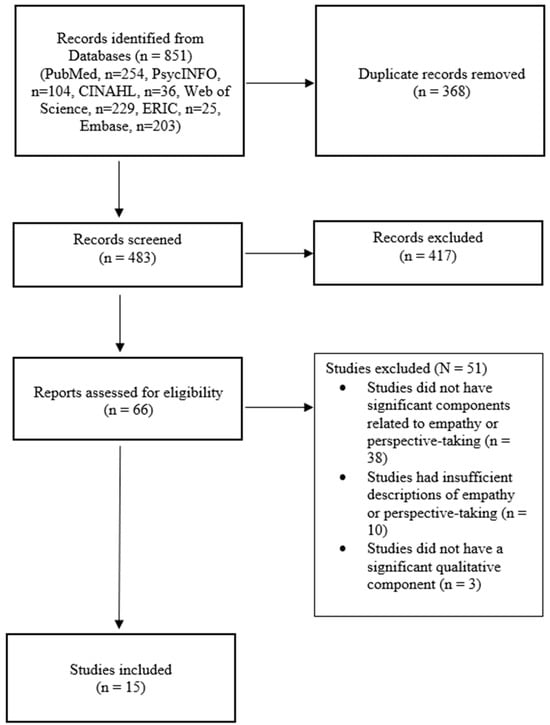
Figure 1
Open AccessArticle
Simulation Needs Assessment Project (SNAP): Use of the Borich Model in Undergraduate Medical Education
by
Samantha Wong, Bradson Serikawa, Meliza Roman, Nicole Hada, Jannet Lee-Jayaram and Benjamin W. Berg
Int. Med. Educ. 2025, 4(4), 42; https://doi.org/10.3390/ime4040042 - 20 Oct 2025
Abstract
Manikin-based simulation is widely used in undergraduate medical education to develop clinical reasoning and communication skills. The Borich Needs Assessment Model has been applied in fields such as nursing and global health to identify gaps between perceived importance and performance, but it has
[...] Read more.
Manikin-based simulation is widely used in undergraduate medical education to develop clinical reasoning and communication skills. The Borich Needs Assessment Model has been applied in fields such as nursing and global health to identify gaps between perceived importance and performance, but it has not been used to evaluate simulation-based learning in undergraduate medical education. We applied the Borich model to assess student perceptions of competencies developed in an established simulation curriculum and to inform future simulation curriculum development. A cross-sectional survey was administered to first-, second-, and fourth-year medical students at the University of Hawaii John A. Burns School of Medicine. Students rated eight SNAP competencies for importance, self-reported performance, and perceived influence of simulation. Weighted discrepancy scores were calculated using the Borich model. Faculty completed a parallel survey to compare competency prioritization. Among 164 student respondents, all competencies were rated as highly important. The greatest performance and influence gaps were reported for “Apply knowledge covered in the unit or rotation to simulation cases” (MWDS = 1.37 and 1.61, respectively). Priorities varied by student year, and agreement between faculty and student rankings was limited. The findings highlight a perceived gap between simulation curriculum and knowledge application. The Borich model effectively identified performance gaps and can support targeted simulation curriculum refinement.
Full article
Open AccessArticle
Use of Videos as Disability Educational Tools for Medical Students
by
Ovuokerie Addoh, Alyssa Axelrod, Caroline Gormley, Sarah Mahasin, Brionn Tonkin, Alexander Senk and Erica Seidel
Int. Med. Educ. 2025, 4(4), 41; https://doi.org/10.3390/ime4040041 - 15 Oct 2025
Abstract
People with disabilities (PWDs) face unique challenges in accessing equitable medical care, due in part to physicians’ limited training in disability-related competencies. This study explored a novel approach to bridging this gap by integrating selected videos and reflective essays into medical education. Third-
[...] Read more.
People with disabilities (PWDs) face unique challenges in accessing equitable medical care, due in part to physicians’ limited training in disability-related competencies. This study explored a novel approach to bridging this gap by integrating selected videos and reflective essays into medical education. Third- and fourth-year medical students watched four videos depicting diverse experiences of PWDs and submitted reflective essays, resulting in the analysis of 90 essays by six investigators. Through thematic analysis, 50 concept codes were distilled into six key themes: recovery process, student insight, adjustment to disability, patient-doctor relationship, social model of disability, and support systems. The reflections revealed a growing awareness among students of the need to individualize care and address systemic barriers, though some medicalized views of disability were noted. These findings underscore the potential of video-based education to enhance disability competence in medical training by fostering critical reflection and empathy. However, to maximize impact, educators should prioritize diverse portrayals of disability and challenge sensationalized or “overcoming” narratives common in such media. Overall, this study demonstrates that widely available media can be a valuable, scalable tool for advancing disability education in medical curricula.
Full article
Open AccessArticle
Views About and from International Medical Graduates’ General Practitioner Training in the United Kingdom
by
Dorottya Cserző
Int. Med. Educ. 2025, 4(4), 40; https://doi.org/10.3390/ime4040040 - 14 Oct 2025
Cited by 1
Abstract
International medical graduates (IMGs) make up a significant proportion of general practitioners (GPs) in high-income countries such as the United Kingdom (UK), the United States of America (USA), Australia, and Canada. This paper compares views about IMGs with their own views in relation
[...] Read more.
International medical graduates (IMGs) make up a significant proportion of general practitioners (GPs) in high-income countries such as the United Kingdom (UK), the United States of America (USA), Australia, and Canada. This paper compares views about IMGs with their own views in relation to the timing of GP placements in GP specialty training programs in the UK. It presents an inductive thematic analysis of focus groups with GP specialty trainers and trainees (149 participants across 32 focus groups), examining opinions about the ideal timing of GP placements. Trainers and home graduates argued that for home graduates, the ideal sequence depends on the trainee’s previous experience. They also suggested that IMGs should start in a hospital placement to develop familiarity with the healthcare system. In contrast, most IMGs expressed a preference for starting in a GP placement, so that they can gain an understanding of the requirements of their specialty as early as possible. There is a contrast between what IMGs said about themselves and the views shared by trainers and home graduates. This highlights the need to involve IMGs in the design of support programs targeted towards them. Recommendations include tailoring training to account for individual career paths and providing training about the healthcare system before the start of the first placement. This could improve the efficiency of GP training programs at a time of extreme pressure on healthcare systems and training providers.
Full article
Open AccessArticle
Understanding the Role of Large Language Model Virtual Patients in Developing Communication and Clinical Skills in Undergraduate Medical Education
by
Urmi Sheth, Margret Lo, Jeffrey McCarthy, Navjeet Baath, Nicole Last, Eddie Guo, Sandra Monteiro and Matthew Sibbald
Int. Med. Educ. 2025, 4(4), 39; https://doi.org/10.3390/ime4040039 - 12 Oct 2025
Abstract
Access to practice opportunities for history-taking in undergraduate medical education can be resource-limited. Large language models are a potential avenue to address this. This study sought to characterize changes in learner self-reported confidence with history-taking before and after a simulation with an LLM-based
[...] Read more.
Access to practice opportunities for history-taking in undergraduate medical education can be resource-limited. Large language models are a potential avenue to address this. This study sought to characterize changes in learner self-reported confidence with history-taking before and after a simulation with an LLM-based patient and understand learner experience with and the acceptability of virtual LLM-based patients. This was a multi-method study conducted at McMaster University. Simulations were facilitated with the OSCEai tool. Data was collected through surveys with a Likert scale and open-ended questions and semi-structured interviews. A total of 24 participants generated 93 survey responses and 17 interviews. Overall, participants reported a 14.6% increase in comfort with history-taking. Strengths included its flexibility, accessibility, detailed feedback, and ability to provide a judgement-free space to practice. Limitations included its lower fidelity compared to standardized patients and at times repetitive and less clinically relevant feedback as compared to preceptors. It was overall viewed best as a supplement rather than a replacement for standardized patients. In conclusion, LLM-based virtual patients were feasible and valued as an adjunct tool. They can support scalable, personalized practice. Future work is needed to understand objective metrics of improvement and to design curricular strategies for integration.
Full article
(This article belongs to the Special Issue New Advancements in Medical Education)
Open AccessArticle
Evaluation of Pharmacy and Nursing Interprofessional Undergraduate Learning in a High-Fidelity Simulated Hospital, Supported with a Virtual Online Environment
by
Adam P. Forrest, Kyung Min Kirsten Lee, Kevin O’Shaughnessy, Jimit Gandhi and Jacinta L. Johnson
Int. Med. Educ. 2025, 4(4), 38; https://doi.org/10.3390/ime4040038 - 25 Sep 2025
Abstract
Pharmacy and nursing professions collaborate closely in healthcare settings. Effective interprofessional practice is now widely recognised as essential for achieving optimal patient care outcomes. Little has been published on nursing-pharmacy Interprofessional learning (IPL) in a simulated environment in Australian contexts. This study aimed
[...] Read more.
Pharmacy and nursing professions collaborate closely in healthcare settings. Effective interprofessional practice is now widely recognised as essential for achieving optimal patient care outcomes. Little has been published on nursing-pharmacy Interprofessional learning (IPL) in a simulated environment in Australian contexts. This study aimed to evaluate whether an IPL activity improved participants’ communication confidence, role understanding, clinical knowledge, and preparedness for hospital placement, while also assessing student satisfaction and identifying areas for improvement. A pedagogically structured teaching and learning model was developed, involving a high-fidelity on-campus simulated hospital ward, supplemented with a virtual online environment to immerse nursing and pharmacy students in a realistic clinical environment to achieve deep learning in preparation for safe practice. An online anonymous survey was conducted to evaluate participants’ experience and preparedness following the simulation. 280 students participated and 52 completed the evaluation. Most students reported that the experience boosted their confidence in communicating with other healthcare professionals (82%), increased clinical/therapeutic knowledge (86%), gave them a better understanding of the roles of nurses/pharmacists within the hospital setting (88%) and left them feeling better prepared for hospital placement (85%). Student free-text responses from the evaluation survey further supported the expansion of the IPL sessions in the future. IPL involving nursing and pharmacy students in a simulated hospital builds confidence in communicating and increases self-reported preparedness for placement.
Full article
(This article belongs to the Special Issue New Advancements in Medical Education)
►▼
Show Figures

Figure 1
Highly Accessed Articles
Latest Books
E-Mail Alert
News
Topics

Conferences
Special Issues
Special Issue in
IME
New Advancements in Medical Education
Guest Editors: Rahul Pandit, Duarte FerreiraDeadline: 31 December 2025
Special Issue in
IME
Health Professions Education Advancements and Innovations—International Perspectives
Guest Editors: Douglas McHugh, Anthony PayneDeadline: 26 January 2026
Special Issue in
IME
Assessment and Performance in Surgical Training
Guest Editors: Sofia Rozani, Vasileios VougasDeadline: 31 March 2026





